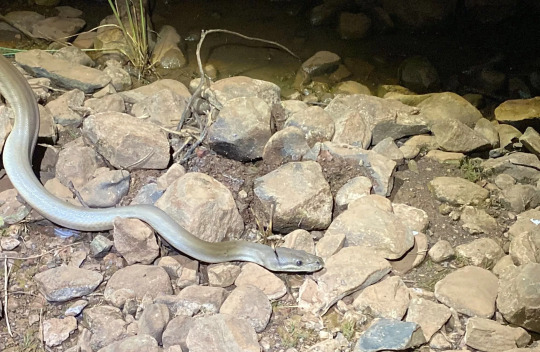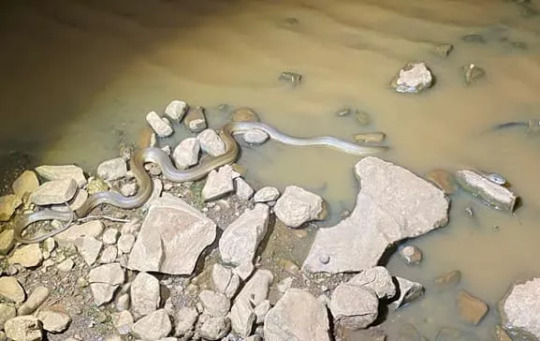#Pilbara Olive Python
Explore tagged Tumblr posts
Text
Finding and Saving the Pilbara Olive Python

The list of snakes that are on the endangered species list are numerous and among them is the Pilbara Olive Python (Liasis olivaceus barroni). This python is found in fairly limited habitats that make their dwindling numbers even more troubling. The fact that they are so difficult to find adds additional challenges to the conservation efforts intended to stop them from dying out.
Among the factors that affect their survival or wildfires that consume their natural habitats and predators that hunt them faster than they can reproduce. This will be discussed in more detail later on. For now, it’s important for anyone who wants to preserve this species to know as much about it as possible.
One of the first things to note about the Pilbara Olive Python is just how difficult it is to find.
The Pilbara Olive Python and the Challenges in Finding It
Founded in the Pilbara region of Australia, the Pilbara Olive Python is a subspecies of the more common Liasis olivaceus species of pythons. The latter is found east of where the Pilbara Olive Python is located. With that said, the species has been spotted in other areas since they are fairly widespread even if there are not a lot of them.
In terms of physical characteristics, the Pilbara Olive Python can grow to an average length of up to 2.5 metres. However, some of the bigger specimens can reach 4 metres in length. Due to their colouring, which is often olive green as the name suggests, they are perfectly adaptable to environments with green backgrounds.
This makes them perfect as ambush predators, where they typically lie in wait for prey to come by. More importantly, it is this characteristic that makes these snakes harder to find on top of them being few in numbers.
During surveys into the region, it wouldn’t be strange to only come across one or two of these species of snake. This is a problem because of how much data can help with conservation efforts.
Common Habitats of Pilbara Olive Pythons
While the Pilbara Olive Python is often found in the Pilbara region, it has also been spotted in northern Gascoyne. Specimens have also been found in the Burrup Peninsula, the Karijini, and Robe River. Basically, if there is a body of water nearby, it is likely that a Pilbara Olive Python would be found there.
Examples of such bodies of water are rivers and rock pools, as well as swamps. As an ambush predator, this species of python choose these areas because more prey can be found around them.
What Threatens Pilbara Olive Pythons

One of the biggest threats that are putting the Pilbara Olive Python on the endangered species list is the loss of habitat. This is practically the case with a lot of other species on the list. In the case of the Pilbara Olive Python, however, the problem is only compounded by the fact that they are so hard to find.
This python species reproduces at incredibly slow rates, which makes their numbers even lower than they already are. The expansion of mining sites is not making the problem any less challenging and the occasional wildfire is another factor to consider.
Fewer habitats mean less to eat for these snakes, which makes reproduction even more problematic. It creates a spiral that would eventually lead to the extinction of the Pilbara Olive Python if it is not addressed.
Saving the Pilbara Olive Python
In order to save the Pilbara Olive Python from extinction, one of the most important initiatives is the gathering of data through surveys. Such efforts need funding, so donations would be a good way to show support.
Legislative action can make a big difference, as well. So anyone interested in helping the Pilbara Olive Python thrive again can help push for this agenda. A few phone calls and voting for the right people could have a huge impact on conservation efforts.
Conclusion
There you have it. Those are everything you need to know about the Pilbara Olive Python and how you can help remove them from the endangered species list. Their low numbers, slow reproduction, and ability to elude surveyors are all contributing factors to their being at risk of extinction. Addressing those issues would be a good first step to take.
Contact us now for a free quote on your project.
1 note
·
View note
Photo

Pilbara Olive Python (Liasis olivaceus barroni) (by Magnus Peterson)
103 notes
·
View notes